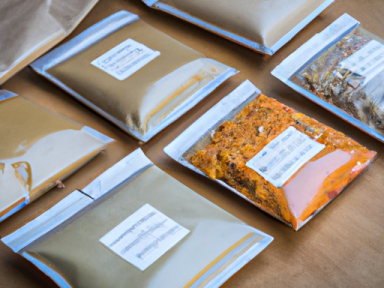
Create your own Meals Ready-to-Eat, packed with nutrition for on-the-go survival scenarios.
In a world filled with uncertainty, it’s important to be prepared for any situation. One essential aspect of preparedness is having the right food to sustain you during emergencies or survival scenarios. While commercially available Meals Ready-to-Eat (MREs) can be convenient, they often lack the nutritional value necessary for long-term sustenance.
That’s why creating your own homemade MREs is not only a cost-effective solution but also ensures you have control over the quality and nutritional content of your emergency food supply. By packing them with nutrient-rich and shelf-stable ingredients, you can guarantee that your MREs will keep you energized and nourished when it matters most.
Choose the Right Packaging
The first step in creating homemade MREs is selecting the appropriate packaging. Look for sturdy, airtight containers that can withstand ambient temperatures and are easy to open, as you may not have access to utensils or can openers during an emergency. Consider using ziplock bags or vacuum-sealed pouches for convenience and space efficiency.
Pack in the Calories
During a survival situation, your body will require more calories to maintain energy levels. Choose calorie-dense foods that are lightweight and have a long shelf life. Nuts, dried fruits, granola bars, and jerky are excellent options. These foods not only provide the necessary calories but also offer essential nutrients like protein, healthy fats, and carbohydrates.
Include Protein Sources
Protein is crucial for muscle repair and keeping your body strong. Including protein sources in your homemade MREs will help you maintain optimal physical performance. Consider adding canned meat, such as tuna, chicken, or even beef, to your emergency food supply. Alternatively, you can include protein-rich vegetarian options like beans, lentils, or textured vegetable protein.
Don’t Forget the Carbohydrates
Carbohydrates provide quick and accessible energy, making them essential for survival scenarios. Including foods like rice, pasta, or dehydrated potatoes will provide you with a reliable source of carbs. These can easily be rehydrated with water, making them suitable for on-the-go situations where cooking facilities may be limited.
Boost the Nutritional Content
While calories are important for survival, it’s equally crucial to ensure your homemade MREs are packed with essential vitamins, minerals, and fiber. Consider including dehydrated vegetables, powdered dairy products, and vitamin supplements to enhance the nutritional value of your emergency meals. This will help maintain your overall health and wellbeing even in trying times.
Label and Rotate
Lastly, remember to label your homemade MREs with the date of packing. This will allow you to keep track of their shelf life and rotate your supply to ensure you’re always consuming the freshest food. Regularly check for any signs of spoilage or expiration, and replace items as needed.
By creating your own MREs, you are taking a proactive step towards self-reliance and preparedness. Don’t wait for a crisis to occur; start assembling your emergency food supply today. Remember, being prepared can mean the difference between surviving and thriving during uncertain times.



GIPHY App Key not set. Please check settings